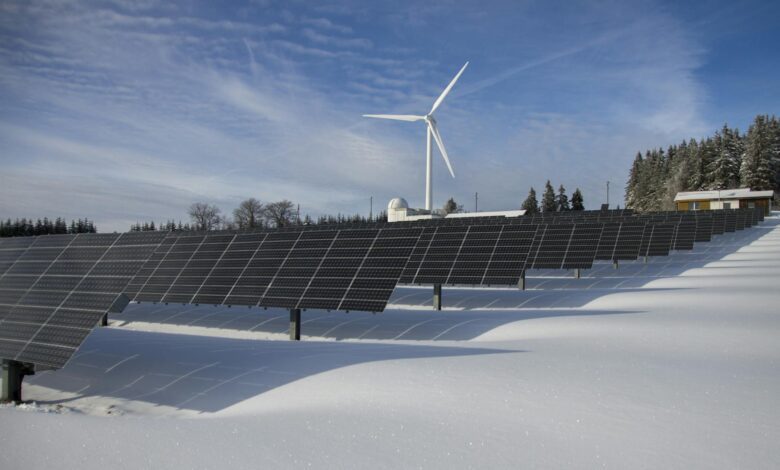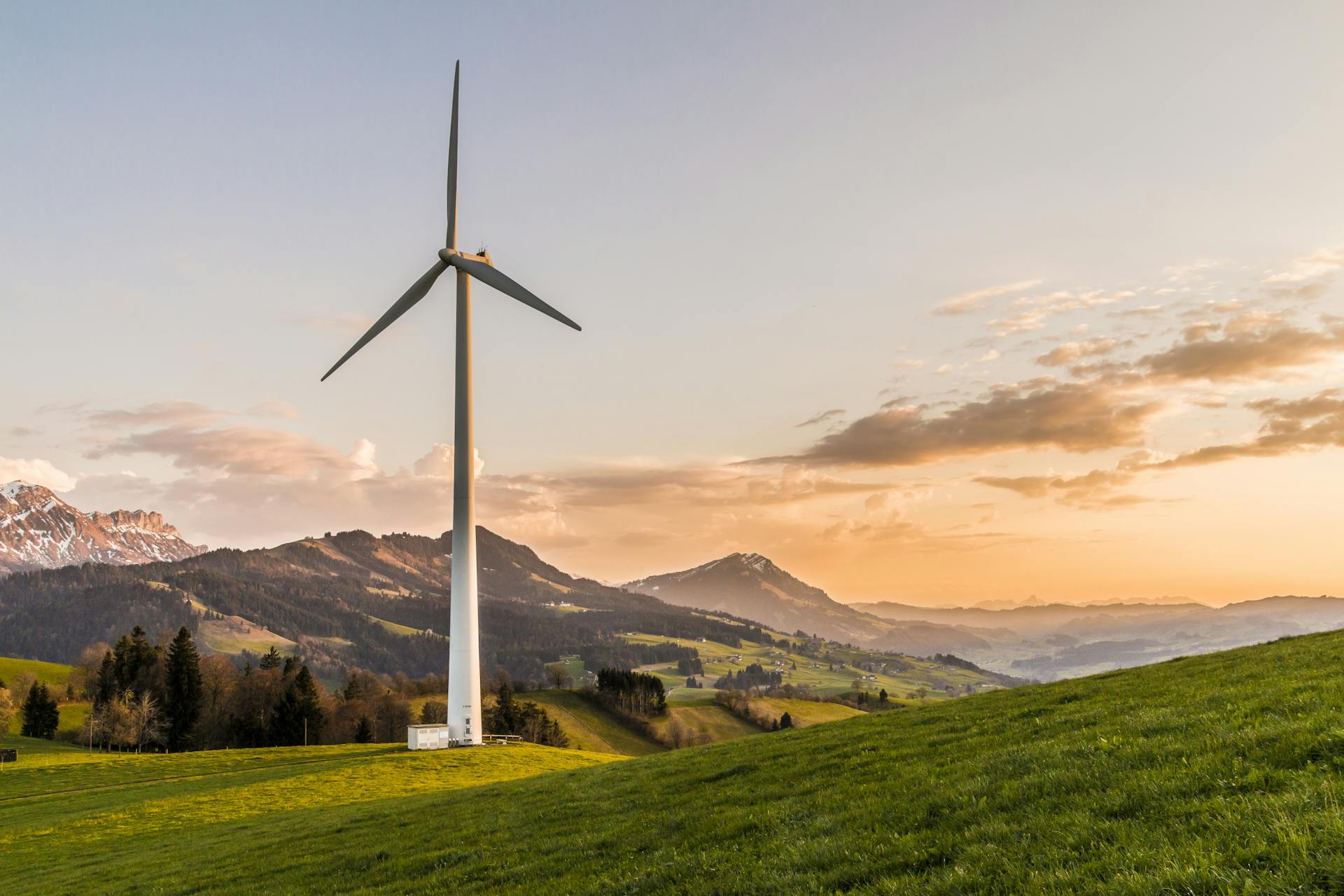What is Renewable Energy: A Sustainable Solution for a Greener Future

The Importance of Renewable Energy for a Greener Future
The world is facing a critical juncture where the need for sustainable energy solutions has never been more apparent. Fossil fuels, the traditional mainstay of energy production, have contributed significantly to the alarming rise in greenhouse gas emissions, leading to global warming and climate change. Renewable energy, on the other hand, presents a promising pathway to a cleaner, more environmentally-friendly future. By harnessing the abundant and inexhaustible sources of energy found in nature, such as the sun, wind, and water, renewable energy systems can drastically reduce our carbon footprint and pave the way for a more sustainable tomorrow.
Types of Renewable Energy Sources
Renewable energy encompasses a diverse array of sources, each with its unique characteristics and applications. The primary types of renewable energy include:
- Solar Energy: Harnessing the power of the sun through photovoltaic cells and solar thermal technologies.
- Wind Energy: Capturing the kinetic energy of wind through wind turbines to generate electricity.
- Hydroelectric Power: Utilizing the flow of water in rivers, streams, and dams to produce hydroelectric power.
- Geothermal Energy: Tapping into the Earth’s internal heat to generate electricity and provide heating and cooling.
- Bioenergy: Deriving energy from organic matter, such as agricultural waste, forest residues, and energy crops.
Also read: Understanding the Difference: Bioaccumulation vs Biomagnification
Advantages of Renewable Energy
The transition to renewable energy offers a multitude of advantages, making it a compelling and indispensable solution for a sustainable future:
- Environmental Benefits: Renewable energy sources emit significantly lower greenhouse gas emissions compared to fossil fuels, contributing to the reduction of carbon footprint and mitigating the effects of climate change.
- Sustainability: Renewable energy sources are inherently sustainable, as they are replenished naturally and do not deplete over time, ensuring a continuous and reliable supply of energy.
- Economic Viability: The costs of renewable energy technologies have been steadily decreasing, making them increasingly competitive with traditional energy sources, and creating new economic opportunities and job prospects.
- Energy Security: Renewable energy reduces the dependence on imported fossil fuels, enhancing energy security and providing greater self-sufficiency for countries and communities.
- Public Health Improvements: The reduced air and water pollution associated with renewable energy can lead to significant improvements in public health, reducing the burden on healthcare systems.
Challenges and Limitations

While renewable energy offers numerous advantages, it also faces certain challenges and limitations that must be addressed:
- Intermittency: The availability of some renewable energy sources, such as solar and wind, is intermittent and dependent on natural conditions, which can create challenges in maintaining a consistent and reliable energy supply.
- Storage and Grid Integration: Effective energy storage solutions and grid integration strategies are crucial to overcome the intermittency of renewable energy and ensure a seamless integration into the existing energy infrastructure.
- Geographical Constraints: The availability and feasibility of certain renewable energy sources are often geographically dependent, requiring careful site selection and infrastructure development.
- Initial Investment Costs: The upfront capital costs associated with the installation of renewable energy systems can be higher compared to traditional energy sources, although the long-term operational costs are often lower.
- Policy and Regulatory Barriers: Supportive policies, regulations, and incentives are necessary to facilitate the widespread adoption of renewable energy, as well as to address any potential market barriers.
Also read: The Hidden Dangers of Thermal Pollution
Global Renewable Energy Trends and Statistics
The global renewable energy sector has experienced remarkable growth in recent years, driven by a combination of technological advancements, policy initiatives, and increasing public awareness. According to the International Renewable Energy Agency (IRENA), the global installed capacity of renewable energy reached 2,799 gigawatts (GW) in 2020, with solar and wind power leading the way.
Some key global renewable energy statistics and trends:
- Renewable energy accounted for 29% of the global electricity generation in 2020, with a significant increase in the share of solar and wind power.
- The Asia-Pacific region has emerged as the global leader in renewable energy, with China, India, and Japan leading the charge.
- The European Union has set ambitious targets for renewable energy, aiming to achieve a 32% share by 2030, as part of its commitment to the Paris Agreement.
- The United States has also seen a surge in renewable energy investments, with the Biden administration’s focus on clean energy and climate change mitigation.
- Developing countries, such as those in Africa and Latin America, are increasingly embracing renewable energy to address their growing energy demands and promote sustainable development.
Government Initiatives and Policies Promoting Renewable Energy
Governments around the world have recognized the critical role of renewable energy in addressing the global challenges of climate change and energy security. As a result, they have implemented a range of policies and initiatives to support the growth and adoption of renewable energy technologies:
- Renewable Energy Targets and Mandates: Many countries have set ambitious targets for the percentage of renewable energy in their overall energy mix, often with legally binding commitments.
- Financial Incentives and Subsidies: Governments offer various financial incentives, such as tax credits, feed-in tariffs, and grants, to encourage investment and deployment of renewable energy projects.
- Regulatory Frameworks and Policies: Comprehensive policies and regulations, such as renewable portfolio standards, net metering, and carbon pricing, create a favorable environment for renewable energy development.
- Research and Development (R&D) Funding: Governments provide substantial funding for R&D initiatives to drive technological advancements and cost reductions in renewable energy technologies.
- International Cooperation and Agreements: Global initiatives, such as the Paris Agreement and the Sustainable Development Goals, have galvanized international cooperation and collaboration to accelerate the transition to renewable energy.
Also read: Why Biodiversity is Important
Renewable Energy Technologies and Innovations

The renewable energy sector has witnessed remarkable technological advancements and innovations, driving the industry forward and enhancing the efficiency, affordability, and accessibility of renewable energy solutions:
- Solar Photovoltaics: Improvements in solar cell efficiency, manufacturing processes, and storage technologies have made solar energy more cost-effective and widely adopted.
- Wind Turbine Technology: Advancements in blade design, generator systems, and offshore wind farm development have increased the power output and reliability of wind energy.
- Energy Storage Solutions: Innovative energy storage technologies, such as batteries, pumped-storage hydroelectricity, and thermal storage, are enabling the integration of renewable energy into the grid.
- Smart Grid and Digitalization: The integration of digital technologies, such as IoT, AI, and blockchain, is enhancing the efficiency, flexibility, and resilience of power grids, facilitating the integration of renewable energy.
- Bioenergy Innovations: Advancements in biofuel production, biomass conversion, and waste-to-energy technologies are expanding the applications and sustainability of bioenergy.
How Individuals Can Contribute to the Adoption of Renewable Energy
While governments and industries play a crucial role in the transition to renewable energy, individuals can also make a meaningful contribution to this sustainable transformation:
- Adopting Renewable Energy at Home: Individuals can install rooftop solar panels, utilize energy-efficient appliances, and explore the feasibility of small-scale wind or geothermal systems for their homes.
- Advocating for Renewable Energy Policies: Engaging with local and national policymakers, as well as participating in public discussions and advocacy campaigns, can help drive the implementation of supportive renewable energy policies.
- Reducing Energy Consumption: Adopting energy-efficient practices, such as turning off lights and electronics when not in use, can contribute to the overall reduction in energy demand and the strain on the grid.
- Supporting Renewable Energy Businesses: Individuals can support companies and organizations that are leading the charge in renewable energy development, innovation, and deployment.
- Educating and Raising Awareness: Sharing knowledge and raising awareness about the benefits of renewable energy among friends, family, and the broader community can inspire others to embrace this sustainable solution.
The Future of Renewable Energy
The future of renewable energy holds immense promise and potential, as the world continues to grapple with the pressing challenges of climate change and the need for sustainable energy solutions. Experts and industry leaders envision a future where renewable energy will play a dominant role in the global energy landscape, driven by continued technological advancements, supportive policies, and a growing public commitment to environmental sustainability.
Some key trends and predictions for the future of renewable energy include:
- Increased Affordability and Accessibility: Continued reductions in the cost of renewable energy technologies, coupled with innovative financing options, will make renewable energy more accessible to a wider range of consumers and communities.
- Grid Modernization and Integration: Advancements in energy storage, smart grid technologies, and grid integration strategies will enable the seamless integration of renewable energy into the existing power infrastructure.
- Diversification of Renewable Energy Mix: The renewable energy mix will become increasingly diversified, with a growing emphasis on a combination of solar, wind, hydroelectric, geothermal, and bioenergy sources to meet the varying energy needs of different regions.
- Sector-Specific Applications: Renewable energy solutions will expand beyond the electricity sector, with increasing adoption in transportation, heating, and industrial applications, contributing to a more comprehensive decarbonization of the economy.
- Global Collaboration and Cooperation: International cooperation and knowledge-sharing will accelerate the global deployment of renewable energy, as countries and regions work together to address the shared challenges of climate change and sustainable development.
Join the renewable energy revolution and contribute to a greener, more sustainable future. Explore the latest renewable energy technologies, policies, and initiatives, and discover how you can take action today. Together, we can harness the power of renewable energy to create a cleaner, more resilient, and prosperous world for generations to come.




